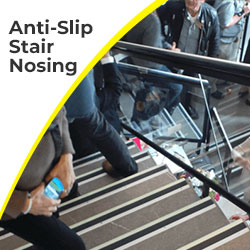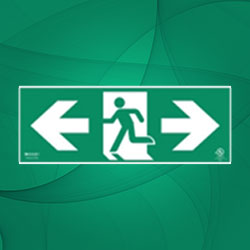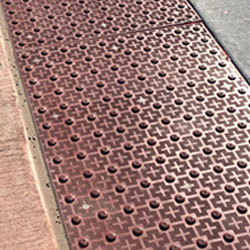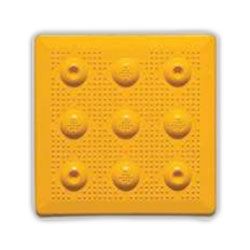































































































































Canada prides itself on being an inclusive, welcoming, and accessible society for all. However, for over 6 million Canadians living with disabilities, navigating the built environment poses daily challenges. Disability statistics in Canada reveal the pressing need to create more accessible, barrier-free infrastructure and public spaces.
This blog delves into the latest data on Canadians with disabilities and explains how it underscores the importance of investing in accessible design with code compliant tactile solutions, including tactile guidance systems and hazard warnings. We will also explore how Tactile Solution Canada’s products can equip builders, architects, and property managers to meet accessibility obligations.
Recent data from Statistics Canada provides insights into the prevalence of disability across the Canadian population:
In 2017, 6.2 million (22%) Canadians aged 15 and older had a disability. This represents about 1 in 5 individuals.
Women (24%) were more likely than men (20%) to report having a disability.
The most common disability types related to pain, flexibility, mobility, and mental health conditions.
Among youth aged 15-24 years, mental health disabilities were the most prevalent at 8%.
Among working-age adults (25-64 years), 59% of persons with disabilities were employed versus 80% of those without disabilities.
Of persons with disabilities not working or in school (ages 25-64 years), 39% or 645,000 individuals had the potential to work.
Senior citizens aged 65+ had the highest disability rate at 38%. Age-related visual and mobility impairments were common.
This cross-section of Canadian society faces diverse functional limitations in seeing, hearing, mobility, flexibility, dexterity, pain, learning, mental health, memory, and more. These impede their full participation in society.
For persons with disabilities, the design of infrastructure and public spaces frequently poses barriers to accessibility:
Perceptual Barriers - Signage, tactile cues, announcements, etc., may not effectively communicate information for those with sensory disabilities.
Physical Barriers - Lack of ramps, elevators, accessible routes, etc., impedes entry and mobility within built environments.
Attitudinal Barriers - Societal attitudes and assumptions limit opportunities and accessibility for Canadians with disabilities.
Technological Barriers - Digital systems, tools, and interfaces often overlook accessibility, excluding persons with disabilities.
Such barriers infringe on rights, isolate citizens, and exclude valuable perspectives. They highlight the need for accessibility-focused design.
The disability data presents a compelling case for accessibility in Canada:
With over 6 million Canadians facing functional limitations, the market need for accessible design is immense. Builders and property managers can tap into this segment.
As the population ages, age-related disabilities will rise. Accessibility is key to keeping aging Canadians active, engaged, and independent.
With lower employment rates among working-age adults with disabilities versus those without, accessibility can help remove barriers to education and employment.
Youth with disabilities need accessible infrastructure to fully participate in social activities, education, sports, recreation, and community life.
Women experience higher disability rates in Canada, underlining the need for a gender-conscious approach to accessibility.
Disabilities encompass a wide spectrum. Accessible design must address diverse needs, capacities, and requirements.
Federal, provincial, and municipal regulations mandate accessibility and barrier-free design in infrastructure projects across Canada:
Accessibility for Ontarians with Disabilities Act (AODA)
Ontario Building Code
National Building Code of Canada
Nova Scotia Accessibility Act
Manitoba Accessibility Act
CSA Standards on Barrier-Free Design
Municipal bylaws
These laws require public spaces and buildings to integrate accessibility features like ramps, tactile for indoor surface area, ISO wayfinding bars tiles, tactile surfaces, directional exit signage, and visual cues.
As a pioneering provider of tactile solutions in Canada, Tactile Solution partners with builders, architects, and property managers to integrate accessibility into public spaces and building projects.
Our product portfolio includes essential tactile systems like:
Access Tile - Composite polymer tactile tiles ideal for indoor and outdoor use. Available as surface-applied and embedded cast-in-place.
Armor Tile - Heavy-duty tactile tiles withstand harsh weather and hefty loads. Multiple tile options for diverse applications.
Advantage Tiles - Extremely durable stainless steel and cast-iron tactile tiles. Withstand decades of high footfall and vehicles.
Eon Tile - Made with durable and flexible rubber, these tactile systems come in both truncated domes and wayfinding categories.
Elan Tile - These porcelain tactile indicators are stylish and durable at the same time and can be used for interior as well as outer applications.
Ecoglo Photoluminescent Products - Exit signs, stair nosings, and directional signage provide critical visual guidance in emergencies.
These solutions promote accessibility and universal design through:
Hazard Warnings - Tactile indicators alert pedestrians to potential dangers like platform edges or busy intersections.
Directional Guidance - Tactile wayfinding tiles guide users safely along intended paths through public areas.
Visibility - High color/brightness contrast aids visibility for those with low vision.
Emergency Egress - Photoluminescent signs illuminate exit routes when lighting fails.
By investing in compliant tactile design, forward-thinking builders and property managers create welcoming environments where all citizens can participate fully.
Major regulations mandating accessibility compliance for infrastructure projects include the Accessibility for Ontarians with Disabilities Act (AODA), provincial building codes, CSA accessibility standards, and municipal bylaws.
Disabilities that can impede accessing public realms include vision loss, hearing impairments, mobility limitations requiring wheelchairs or walkers, chronic pain, and cognitive disabilities.
Tactile guidance paths and hazard indicators provide critical navigation cues and warnings through touch and visual contrast to pedestrians with vision loss.
Key locations requiring compliant tactile tiles or pavers are transit platforms, sidewalks, pedestrian crossings, building entrances, stairs, parks, and parking areas.
The prevalence of disability across age groups and genders indicates a widespread need for accessibility. This data supports the business case for organizations to invest in inclusive design.
The need for accessible infrastructure is clear - over 6 million Canadians face barriers when navigating the built environment. Universal design benefits us all.
As Canada works towards its 2040 accessibility goals, organizations like Tactile Solution Canada equip stakeholders with practical solutions to transform spaces. Contact us today to make accessibility a reality.
